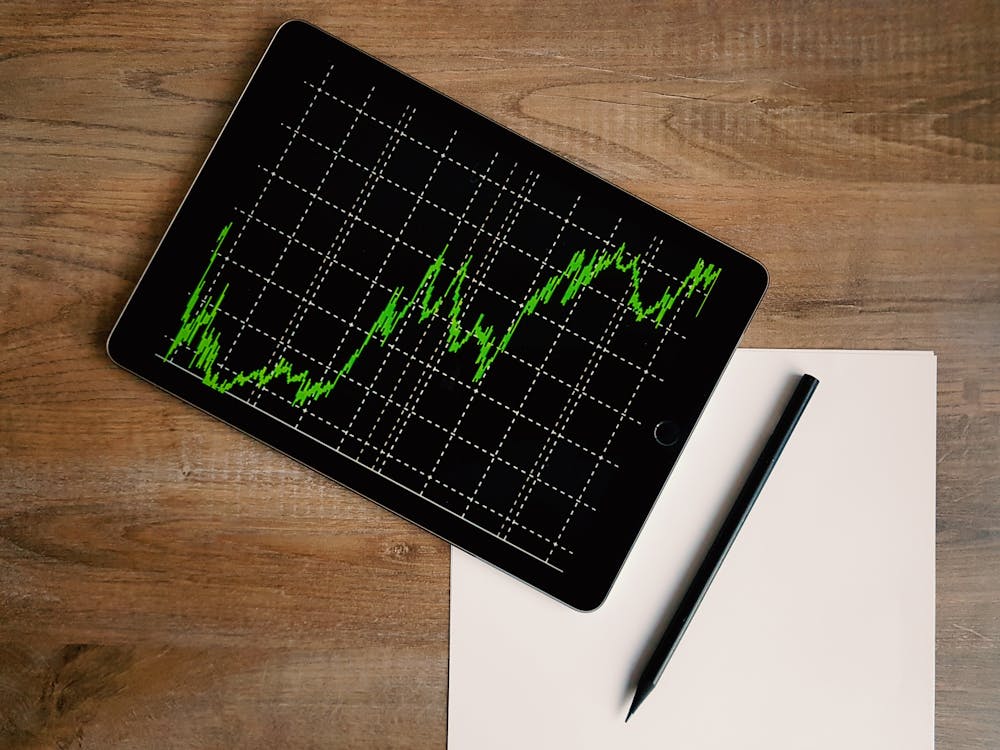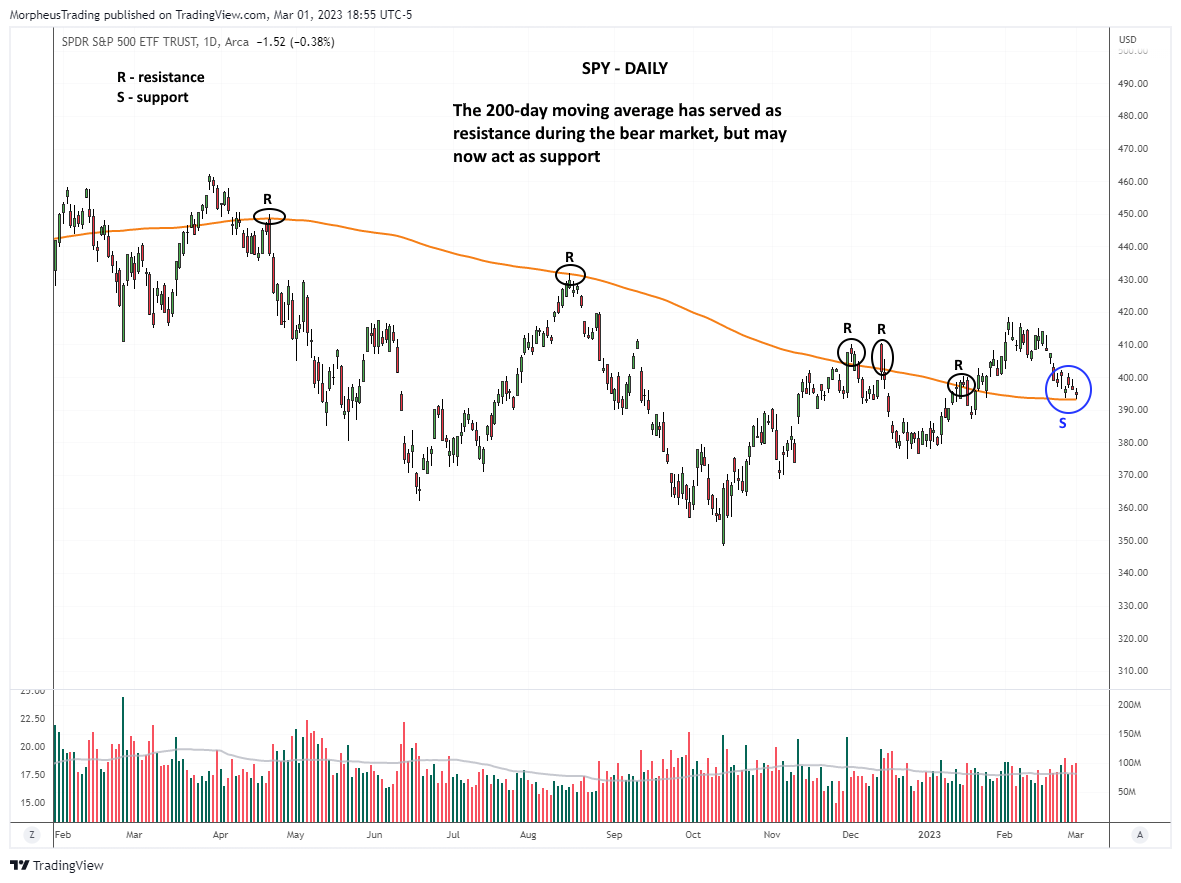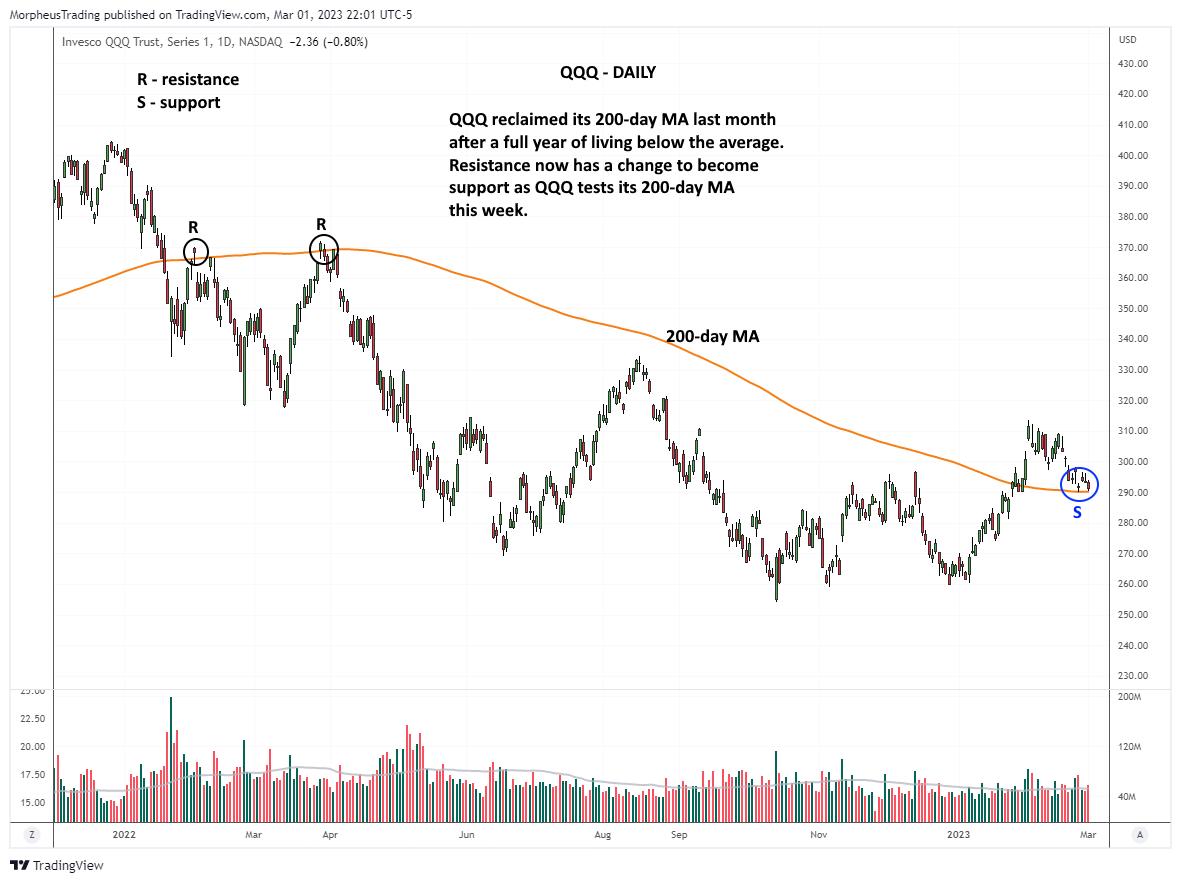Supercharge Your Trading With The 200-Day Moving Average Support Indicator

Image Source: Pexels
Are you using the powerful 200-day moving average indicator in your trading strategy? If not, it’s time to start paying attention. Discover how the 200-day moving average has become a crucial “line in the sand” for the S&P 500 (SPY) and Nasdaq 100 (QQQ).
We have previously explored the significance of the 200-day moving average as a “must follow” indicator for 2023.
At that time, the 200-day moving average (200-day MA) was firmly acting as resistance for the S&P 500 and Nasdaq 100 indices. However, the technical picture has changed and the 200-day MA has recently flipped to key, long-term support.
In this post, we take an updated look at the long-term trends of both the S&P 500 and the Nasdaq 100, and how the 200-day MA has become a key “line in the sand” in today’s market.
200-Day Moving Average: Prior Resistance Becomes New Support
When we previously highlighted the long-term charts of the SPY and QQQ, we discussed how the 200-day moving average clearly acted as resistance throughout the 2022 bear market.
These indices have broken out above their 200-day MAs since then, which means that prior resistance has shifted to the new support level. The most basic tenet of technical analysis states that a prior level of resistance becomes the new support after the resistance is broken (and vice versa).
The S&P 500 ETF
In the chart below, you may notice that the SPY finally reclaimed its 200-day MA in late January, pulled back in February, and is now sitting right at support of its 200-day MA.
It’s positive that the SPY moved back above its 200-day MA, but you may notice that the moving average is still trending slightly lower. It would be a more reliable indicator of bullish momentum if the 200-day MA were to start turning higher.
The Nasdaq 100 ETF
The QQQ has a similar chart pattern to the SPY, as the price broke out above its 200-day MA in late January before it entered into a four-week correction off the swing high. It’s positive that the 200-day moving average of the QQQ has flattened out quite a bit, but it is still sloping lower:
The Importance of Support and Resistance
As traders, one must know the significance of using the 200-day moving average as a support and resistance level. In an uptrend, the 200-day MA can act as a support level. Conversely, the indicator typically acts as resistance in a downtrend. By identifying and tracking these levels, you can make informed decisions that consistently put you on the right side of a dominant market trend.
In the current market, the 200-day MA is providing crucial support for both the SPY and the QQQ. However, it’s still too early to declare a reversal of the 2022 bear market. For that, we would at least need to see confirmation of the 200-day moving averages trending higher (not flat to lower).
Using Other Indicators to Confirm Signals
While the 200-day MA is an essential technical analysis tool, it’s important to use other indicators to confirm signals.
One reliable technique is to look for crossovers of the 10-, 20-, and 50-day moving averages as potential signals for trend reversals or trend confirmations. For example, a crossover of the 50-day moving average above the 200-day moving average may signal a bullish trend reversal. On the other hand, a crossover of the 10-day moving average below the 20-day moving average may indicate a short-term bearish trend is shaping up.
In addition to tracking moving average crossovers, you should also pay attention to volume patterns as an indicator of market sentiment. Generally, a healthy market is backed by higher volume “up” days and lower volume on the pullbacks. By tracking changes in trading volume, you can gain insight into whether a trend is gaining or losing momentum and adjust your trading strategy accordingly.
Overall, by combining technical analysis tools such as moving averages, volume patterns, and relative strength, you can make more informed trading decisions that will increase their chances of trading success.
Power Up Your Trading Performance
The 200-day moving average is a powerful tool in identifying long-term market trends, and the current technical picture of the SPY and QQQ reinforces its importance. The 200-day MA accurately predicted the January shift from resistance to support, reinforcing it as a reliable indicator of the overall trend.
As traders, it’s essential to stay on top of market trends and identify key indicators that can help you make well-informed trading decisions. The 200-day moving average is one such tool that you can’t afford to ignore.
More By This Author:
200-Day Moving Average: Your Key, “Must-Follow” Stock Market Indicator In 2023Trading Psychology: 4 Dangerous Emotions Traders Must Avoid
Has The Stock Market Historically Performed Well Around Labor Day?
Disclaimer: Past results are not necessarily indicative of future results. There is a high degree of risk for substantial losses in trading securities. All data and material on this website ...
more




